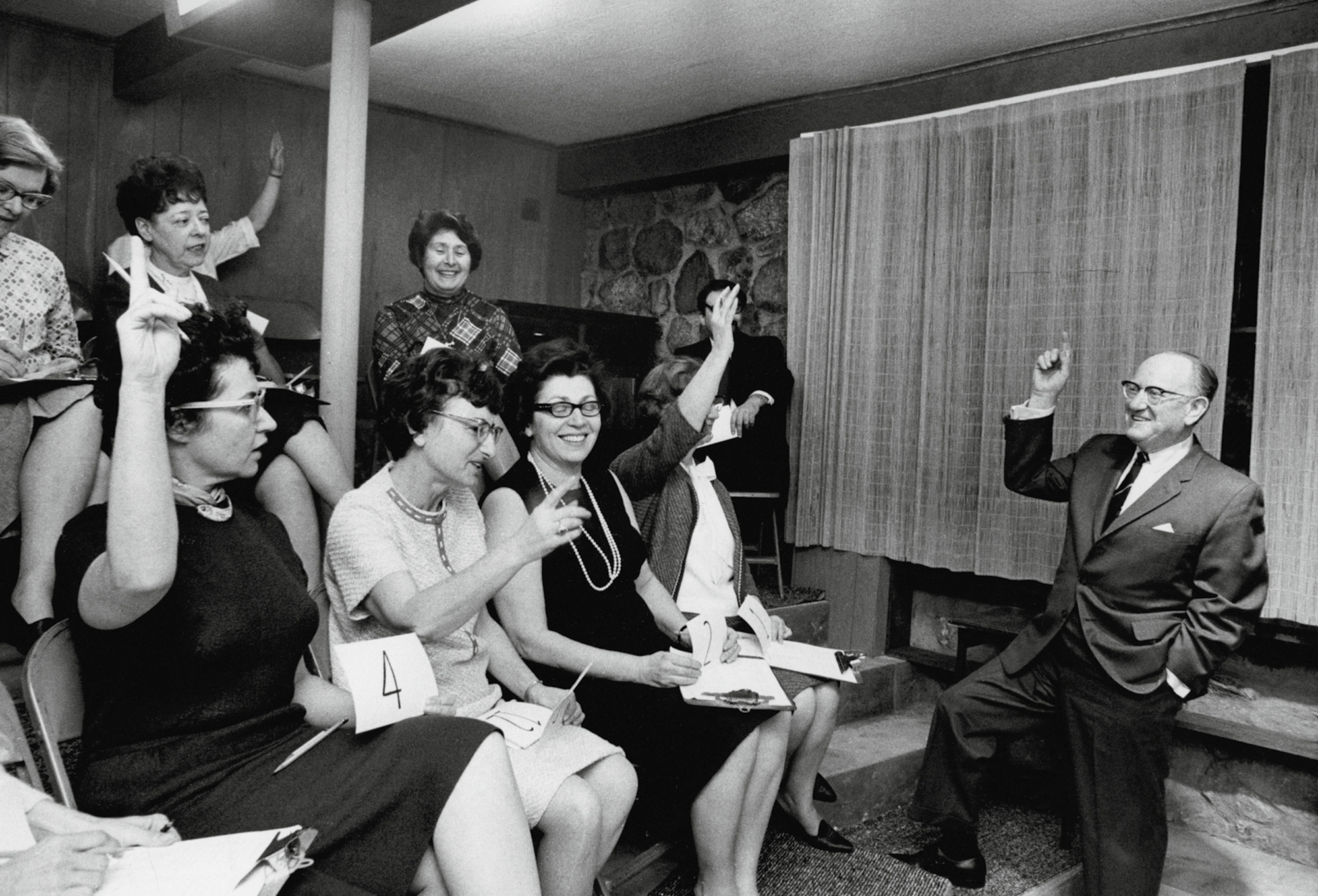The Hidden Persuader
Ernest Dichter, the “Freud of Madison Avenue”
Christopher Turner

In the early 1950s, the United States produced half the world’s goods and possessed two-thirds of its machinery; the resulting prosperity and automation increased standards of living and swelled the middle-class.[1] Sociologists such as David Riesman and C. Wright Mills began to worry less about poverty than about the conformist, suburban nature of the American dream, and the corrupting and alienating results of affluence. The “new little men,” wrote Mills in White Collar: The American Middle Classes (1951), were “cheerful robots” and “political eunuchs,” cogs in a bureaucratic machine that they didn’t feel they were able to change. In The Lonely Crowd (1950), Riesman painted a similar portrait of an apathetic, status-obsessed, socially anxious citizenry dominated by the “marketing mentality.”
Advertisers honed methods to exploit these anxieties and feed the fifties’ orgy of consumption. Since 1940, America’s gross national product had soared more than 400%, and the average citizen had five times as many discretionary dollars to spend on luxuries as in the previous decade. By the late 1950s, to compete for this spending power, corporations directed nearly $12 billion toward advertising (up from $2 billion in 1939) and three-quarters of the largest advertising companies used “depth techniques”: in a crowded marketplace, businesses came to rely on techniques inspired by psychoanalysis to make their products more seductive to the masses, to ignite customers’ desires, and make them buy things that they didn’t really need or even know they wanted.
In the United States, psychoanalysis had long had a fluid relation with business and commerce. Indeed, you might say that psychoanalysis first came to America coupled with its commercial usage. Freud’s Vienna-born American nephew, the publicist Edward Bernays—whose mother was Freud’s sister, and whose father was Freud’s wife’s brother—founded the country’s first public relations firm in 1919, and consciously used his uncle’s idea of a latent but powerful sexuality as a form of subliminal seduction to manipulate the masses. Freud spent time with Bernays during his 1909 tour of America and became fond of him, but Ernest Jones dismissed him as “an American ‘sharper’ and quite unscrupulous.”[2] Bernays was instrumental in the publication of American editions of Freud’s writings, and he was always on the lookout for different ways in which psychoanalysis might be popularized and exploited for profit—he tried, unsuccessfully, to get his uncle to write a column for Cosmopolitan magazine. During his stay, Freud had been exposed to, and amused by, the aggressive marketing that Bernays was to make his own—he saw an advertisement outside an undertaker’s that read, “Why live, when you can be buried for $10?”[3]